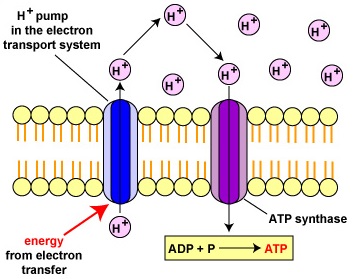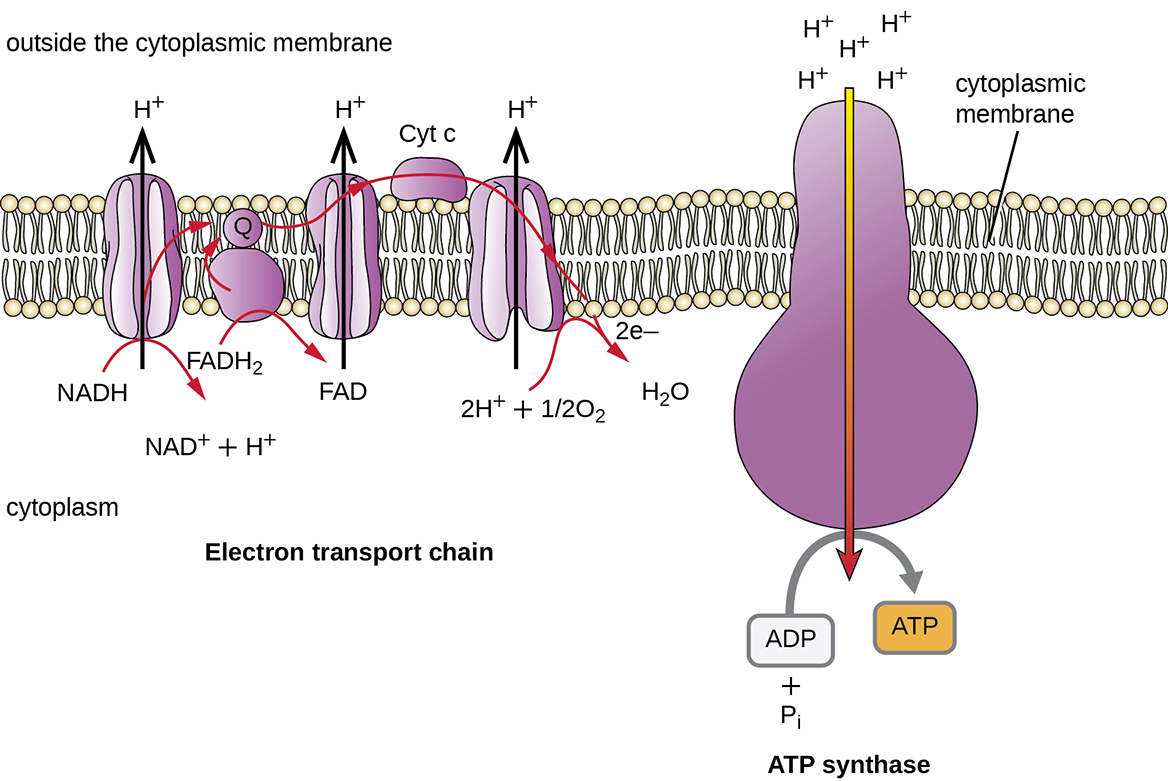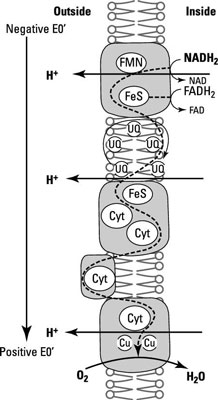proton motor force
Geller Movva. Asghar SS Levin E Harold FM.

Proton Motive Force Is Required To Drive Mitoflash Generation Download Scientific Diagram
Proton motive force PMF a source of energy resulting from the separation of protons from hydroxyl ions across the cytoplasmic membrane generating a membrane potential.

. Bacterial membranes can generate the proton-motive force PMF through the electron transport chain and it is known that SecYEG transduces the energy available in the PMF to stimulate protein translocation Brundage et al 1990. The PMF is made up of the sum of two param- eters. It promotes the movement of electrons against the electrochemical potential.
Fermentation in contrast does not utilize an electrochemical gradient. The two components of Deltap DeltaPsi the transmembrane potential and DeltapH the chemical gradient of H were determined by the accumulation of radiolabeled tetraphenylphosphonium. Shiozuka Tani Mizushima Tokuda 1990.
At 25C 298K this equation takes the form. The proton motive force occurs when the cell membrane becomes energized due to electron transport reactions by the electron carriers embedded in it. In mitochondria energy released by the electron transport chain is used to move protons from the mitochondrial matrix.
Schiebel Driessen Hartl. Experiments with the aerotolerant anaerobe Streptococcus lactis provide the opportunity for determining the proton motive force Deltap in dividing cells. ATP or adenosine triphosphate is a molecule that traps energy within their phosphate bonds.
Δμ H 1 kJmol coresponds to Δp 104 mV. Proton-coupled accumulation of galactoside in Streptococcus lactis 7962. In most cases the proton-motive force is generated by an electron transport chain which acts as a proton pump using the Gibbs free energy of redox reactions to pump protons hydrogen ions out across the membrane separating the charge across the membrane.
- one function of the respiratory chain is to regenerate NAD for glycolysis. Skip to main content. Proton motive force is the force created by the transfer of protons or electrons across a membrane that can be used for chemical mechanical or osmotic processes.
Energy coupling by a proton-motive force. Proton motive force is the electrochemical potential difference between on different sides of any Q. Mitchell defined the proton-motive force PMF as.
Most important thing here is that the energy expressed here as Gibbs free energy electrochemical proton gradient or proton-motive force PMF is combination of two gradients across the membrane. Proton-motive force can be generated by a variety of phenomena including the operation of an electron transport chain illumination of a PURPLE MEMBRANE and the hydrolysis of ATP by a proton ATPase. What is the proton motive force in bacteria.
In bacteria the extrusion of protons by the electron transport chain results in an electrochemical gradient of protons known as the proton motive force PMF generated across the cell membrane. Basically this causes the cell to act like a tiny battery. The electric potential DJ and the transmembrane proton gradient DpH.
Its energy can either be used right away to do work like power flagella or be stored for later in ATP. A proton motive force drives protons down the gradient across the membrane through the proton channel of ATP synthase. Accumulation of neutral amino acids by Streptococcus faecalis.
Energy that is generated by the transfer of protons or electrons across an energy-transducing membrane and that can be used for chemical osmotic or mechanical work. Electrons from cytoplasmic NADH enter mitochondria by shuttles. Fermentation instead only uses substrate-level phosphorylation to produce ATP.
The proton-motive force created by the pumping out of protons by the respiratory chain complexes is in the mitochondria of most tissues mainly used to translocate protons through the ATP synthase complex leading to the formation of. Describe how a proton gradient is used to generate ATP. Google Scholar Kashket ER Wilson TH.
The proton-motive force created by the pumping out of protons by the respiratory chain complexes is in the mitochondria of most tissues mainly used to translocate protons through the ATP synthase complex leading to the formation of ATP from adenosine diphosphate ADP and phosphate.

Ppt The Proton Motive Force Powerpoint Presentation Free Download Id 2214340

Proton Motive Force An Overview Sciencedirect Topics

Electron Transport Chain Bioninja

Atp Synthase Chemiosmotic Coupling Oxidative Phosphorylation Mcat Content

Supply Demand And Leak Pathways Of The Protonmotive Force In Download Scientific Diagram

The Proton Motive Force Chapter 21 Stryer Short Course Ppt Download

Chapter 14 Part 2 Oxidative Phosphorylation Proton Motive Force P Pmf Is The Energy Of The Proton Concentration Gradient The Chemical Ph Ppt Download

110 Proton Motive Force Youtube

18 3d Electron Transport Chain And Chemisomosis Biology Libretexts

110 Proton Motive Force Youtube

Respiratory Chain Plasma Membrane 78 Steps Health

Is This Equation For The Proton Motive Force Correct Or Should The Electrical Contribution Also Be Multiplied By Number Of Protons Translocated R Biochemistry

Proton Motive Force Is Required To Drive Mitoflash Generation Download Scientific Diagram

8 3 Cellular Respiration Microbiology Canadian Edition

The Proton Motive Force Article Dummies

Chapter 20 21 Electron The Proton Motive Force And Atp Synthesis Flashcards Quizlet

Cellular Respiration Microbiology

Passive H Flux Across The Plasma Membrane Is Governed By The Proton Download Scientific Diagram

Comments
Post a Comment